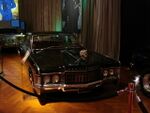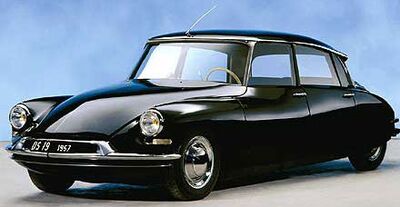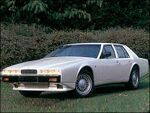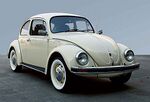Why?:Drive a classic car

|
Why? This article is part of Uncyclopedia's Why? series. See more Why's? |
Classic cars are those automobiles which are either no longer in production, were produced in very small numbers, embody a particular landmark stage of automotive history or which are owned by people who enjoy towing their car to the mechanic's garage a lot. But why, you may ask, would anybody want to own a car that needs to be towed to the mechanic's garage a lot? There are many reasons to own a classic car, but most owners and enthusiasts will tell you that their vehicles offer character and charm simply not found in non-classic cars[1]. If you are considering buying one, read this article to find out all you need to know.
- ↑ Another common reason is that cars built prior to a certain date generally comprise only of parts built in one country, making it possible to drive a vehicle which is 100% British/American/from where you're from and has no parts made in Germany/Korea/target of your racial prejudice.
So - how I do tell a Classic Car from an Outdated Pile of Crap?[edit]
To be a classic, a car does not necessarily have to be old. It must, however, be either very rare, very desirable, in some way revolutionary or any combination of two or more of these points. This means that a Bugatti Veyron, while modern and very ugly indeed, is nevertheless a classic since it is rare and considered desirable. It could also be said to be revolutionary, due to being the first road-legal car with a top speed in excess of 700mph. A Volkswagen Beetle meanwhile, though old and considered desirable by some, is not a classic since it is neither beautiful, rare or revolutionary and as such is merely a pile of crap[1].
- ↑ Early VW Beetles are, however, highly sought after due to rumours that Adolf Hitler once got lucky with Eva Braun on the back seat of one during a showing of Um Das Menschenrecht at the Nuremberg Drive-In in 1933, leading to hopes among neo-Nazis that it may be possible to clone the Führer from stains on the upholstery.
Classics Versus Non-Classics[edit]
Advantages of driving a classic car[edit]
- Easy to find in a car park
- Character-building, toughens you up
- Takes you back to a slower pace of life
- More interesting than faceless modern cars, brings adventure back into motoring
Advantages of driving a non-classic car[edit]
- It won't break down on the way to the carpark
- Has things like a heater, comfortable seats
- Can travel at more than 40mph
- Won't break down on a deserted remote road when it's -10C
Classic Car Sales[edit]
There are a number of magazines available on the subject of classic cars, all of which will include a large number of adverts placed by professional dealers (also known as con men) and from private owners (also known as people trying to sell clapped-out old bangers that aren't really worth anything) who seek to sell various examples. If you are planning on purchasing a classic car, it is essential that you first spend a little time and effort learning the classic car traders' language. Note - classic cars, despite being machines without souls, are never referred to as it. Always use the terms she and her, for example, "She's got a fully-reconditioned big end in her." Here are some examples of genuine adverts, with translations into standard English.
1969 Lotus Europa S2 - DAMAGED. For Sale
Lotus Europa S2. 2 Door Red. Manual Petrol. 362 Miles. NO KEYS. DAMAGE TO FRONT END, OFFSIDE DRIVERS DOOR, OFFSIDE REAR QUARTER, REAR, ENGINE COVER. IDEAL VEHICLE FOR A RESTORATION PROJECT. Bargain at £2600.
Translation: Tatty old Lotus, was nicked by joyriders who weren't good enough at hotwiring to get a decent fast modern hatchback and later smashed into a tree during the subsequent police chase. Absolute insurance write-off, bought by us for £20, complete rip off at £2600.
Saab 99GL 5050 miles from new. Stunning car. For Sale (1983)
This Saab is as she left the factory in 1983, an absolute stunning vehicle. I am very meticulous over my cars & the reason I am selling her is basically because I dont get the chance to use it. £5000.
Translation: My nan popped her clogs last month and the tight old cow didn't leave me any money in her will so I'm flogging her horrible old Saab which hasn't had any maintenance done for 26 years. Five grand might seem steep, but I need the cash for a new Ford Focus after blowing my savings on the bitch's funeral. (Note also that the vendor commits the cardinal error of referring to the car as "it," rather than "she." This reveals that he is not part of the classic car world.)
Unique VW Polo 1.3 GL For Sale (1987).
Three years ago I bought a completely standard and well loved 1987 VW Polo 1.3 with a rare 5-speed gearbox, and since then I have spent a whole heap of time and far too much money transforming her into a magazine-featured show car. £3250
Translation: Baby's-shit-beige VW crapheap which has been incompetently modified by a braindead chav retard to try to make it go faster. Was featured in Practical Mechanic Magazine, in an article called "Home Modification - How To Cock It Up."
Daimler V8 Auto For Sale (1963).
This is a really good example of the "Best Jaguar they never made" Only 77000 miles with very detailed history. The car was subject to a £10 k body rebuild in 2003 and we have all the photos. Gunmetal grey. £6950.
Translation: This model never went into production because it was so shit - this is one of the five built for tests (the other four exploded for no reason, killing their drivers). The logbook is full of entries because it's needed so many repairs over the years. Recently had all the original panels ripped off and replaced with tasteless plastic spoilers etc. Resprayed with some old floorpaint we happened to have lying about the garage to hide the rust on what remains of the original shell.
Value and Pricing[edit]


Estimating the value of a classic car is a very simple process. First, find out what the car weighs, then visit a scrap yard and ask what they would offer for that amount of scrap iron - commonly around £50. Then multiply that figure by 100 - this is the basic formula which will serve you well for the majority of classics. However, if the car is a luxury model - ie; Rolls Royce, Aston Martin, Bentley or a Mercedes or Rover built prior to 1970 when they decided to make crap cars instead - the figure must be multiplied by 1000, if the car is exceedingly rare by 20,000 and finally if it was ever owned by somebody famous you can make up any figure you wish, because some sad fanboy out there who has since made a fortune in IT will buy it. If the car has been involved in an accident in which a famous person died - even if the car ran them down while being driven by a nobody - make up any figure you wish and add £100,000.
However, this does not always apply. The Porsche in which James Dean met his end sold at auction for $20 million in 2004, despite the fact that the car was so mangled in the crash that Uri Geller wouldn't bother trying to straighten it out even if you gave him 800mg of LSD and a fully-equipped bodyshop. Meanwhile, classic car dealers estimate that were American shock-rocker Marilyn Manson to die at the wheel of his classic Lincoln Continental, the car would still only be worth about $40. That doesn't mean that it wouldn't be a good thing to happen, though, and thousands of people around the world pray every day that it will.
Potential Problems[edit]
Classic cars, especially older models, frequently experience problems or failure in any or all of the following parts:
air filter, alternator, automobile self starter, bell housing, brakes, anti-lock braking system, bumpers, battery, camshaft, catalytic converter, car doors, carburettor, clutch, connecting rod, crankcase ventilation, crankshaft, cylinder head, dashboard, differential, drive shaft, distributor, electronic Control Unit, electronic fuel injection, exhaust gas recirculation, exhaust manifold, exhaust pipe, exhaust valve, fuel injector, fuel pump, fuel tank, fuses, gasket, grille, gudgeon pin, hand brake, hazard lights, head gasket, headlight, ignition coil, indicator light, intake manifold, intake valve, kingpin, manifold, muffler, odometer, oil filter, oil pump, oil sump, piston, piston rings, PCV valve, rack and pinion, radiator, rear-view mirror, rocker arm, rocker covers, seats, seat belts, spark plugs, speedometer, starter ring gear, steering wheel, tachometer, tailpipe, tappet cover, thermostat, timing belt, transmission, universal joint, water pump, windscreen wiper, windscreen, wing mirrors.
It is common for a combination of the above to fail at the same time, usually when you are miles from home, it's raining and you just happen to be driving along the darkest part of the very dark and only road that passes the Village of The Murderers, which is in the middle of a large and impenetrable forest full of wolves. If you call a garage, they will send out a mechanic who will be about 18 and only able to reprogramme computerised engine management systems. Failing to find a port on your car into which he can plug his laptop, he will charge you an obscene amount of money to tow it back to the garage where he works.
Going to the Mechanic's[edit]
Many people choose a classic car over a recent model because they believe that ownership will allow them admittance into a friendlier world marked by camaraderie and cheerfulness in which drivers wave to one another as they pass. This is true - the classic car world is indeed a far less aggressive place than that of everyday motoring and you will find that you begin to form lifelong friendships soon after purchasing your classic. Not least of these will be your mechanic, of whom you are going to be seeing a very great deal because if there's one thing classic cars are very good at it's breaking down. Estimate one visit per month for every decade that your car has been in existence (five per month if it's a British car made between 1960 and 1990 or an Italian model from any year).
You'll soon find that you look forward to your trips to the repair shop, because classic car mechanics are a considerably more personable species than the average car repairman - this will especially be the case if you happen to discover that you are one of the very rare female owners of a classic car. Felt put off by the macho world of the repair shop with its openly-displayed calendars depicting topless blondes, driving the sweaty, testosterone-oozing denizens to a state of sexual lust? You have nothing to fear from your friendly local classic car mechanic. For a start, he's well into his 80s and far more interested in drinking tea than taking advantage of innocent young ladies such as yourself and anyway, he'd have no chance of being a sexual predator even if he downed a pint of Viagra.
You may mistakenly assume that the garage is shut when you arrive, and possibly even think it has been for many years. Don't give up just yet, though, because sooner or later a door will creak open and the mechanic will emerge from his lair, his arthritic knees drowning out the creaking door. Try to park as near to the garage entrance as you can - the old boy's not too steady on his feet these days and walking any more than twenty yards or so plays havoc with his rheumatism. He'll open the bonnet (or the hood, if you've opted for an American classic) and poke about in your car's intestines for a bit, tutting and muttering under his breath. After a while, he'll resurface and deliver a pseudo-scientific rant attacking modern fuel additives, the deposits they leave in older engines and - almost as an afterthought - that something called your "rotary fluctuation inhibitor" is caked-up and needs replacing.
"Oh good," you think. "He obviously knows his stuff. I'll be back on my way in no time."
But no. Idly kicking the tyres, he will embark on a long-winded monologue concerning the fact that old parts are no longer manufactured. He'll mention that he saw one for sale at an autojumble[1] in 1957, but even then he thought he was unlikely ever to need one again, having last replaced one in the 1930s. "It could be worth your time having a look round a few classic meets[2] and rallies yourself," he'll say, "You might find one. Eventually. I wouldn't get my hopes up though."
"I do know an old chap who might be able to help you out, though," he'll say just as you're about to begin the long walk home, stopping to pick up a copy of AutoMart to see what the showrooms are charging for a practical little compact hatchback these days.
In his lair, you will get slobbered on by a very smelly dog that, incredibly, seems to be the same age as the mechanic who is now trying to get his head around the concept of that most infernal of modern inventions, the telephone. The dog, despite its age and unlike its owner, retains sexual potency and will hump your leg, possibly succeeding in producing a trickle of watery sperm that will stain your shoes if it can keep awake that long. After a few abortive attempts during which he takes some time to remember that the caller must now enter the numbers himself instead of speaking to an operator and being put through, he will successfully make contact with somebody called Frank. Frank is 113 years old and is the last surviving ex-employee of the factory that built your car. He also has a lathe in his shed (stolen liberated from the factory in lieue of wagest, back in the good old days of working-class Communism) and is able to produce a rotary fluctuation inhibitor to the original specifications.
"I'm afraid it'll cost you a bob or two," the mechanic says, "and it might not be ready for a week or so either." Remember that when classic car mechanics say a bob or two, they mean several thousand pounds; which is the amount you will have to hand over in six months' time when your car is finally repaired and once again road-worthy. You have to admit though - classic cars are a lot more interesting than a Nissan Micra.
- ↑ Sort of like a flea market, but sells old car parts rather than pre-1974 pornographic magazines and rubbish.
- ↑ An organised event at which classic car owners drive their vehicles very slowly around a field so that other classic car owners can look at them. About as interesting as listening to John Major on nitrazepam count in binary.
Going For a Spin[edit]
Classic cars are never used to drive from one place to another, to go grocery shopping or to deliver/pick up the children to/from school, at least in part because these activities often involve some sort of deadline - since classic cars are perhaps the most malevolent of all inanimate objects, they will contrive to make you late in any way possible. Care to experience the wrath of other drivers when your prized 1955 Alvis overheats for the nineteenth time in a mile, creating yet another tailback; or the embarrassment of owning a car that pours out blue smoke but refuses to move in a supermarket car park, watched by several hundred people? How about the withering looks of your children, once they've been left to wait at the schoolgates during which you were attempting an emergency decoking of the cylinder heads at the roadside that led to you partially stripping down the engine block with your teeth due to not having the 2 and 5/17ths of an inch pentagonal socket that is an absolute necessity of this task alone and no other that has ever been carried out in the entire history of humanity? Children who, two hours previously (when you should have been there), observed little Timothy-from-up-the-road's father collect him in his brand new BMW and who are now going to ask you why you can't have a job like little Timothy-from-up-the-road's father so that you too can buy a nice, new, shiny, reliable car like his, despite the fact that you actually work a 55 hour week so the darling cherubs want for nothing, the ungrateful little bastards ("And it's got real working DVD players in the backs of the front seats, Daddy! I wish we weren't poor and you had an important job so we could have a car like that!")? Children who, during those two hours, will almost certainly be approached by evil drug pushers, paedophiles and - worse of them all - any interfering do-gooders avid to find any viable reason to phone child protection agencies so as to add some form of meaning to their otherwise pointless existence, thus labeling you forever after as The Parent Who Left Their Children Unattended In Public For Two Hours, eternally afraid to leave the house or open the curtains for fear of the harsh looks and whispered comments of neighbours and terrified that sooner or later the Daily Express will run an exposé on you[1]?
Well, that's why classic cars are never used for any practical purpose and instead reserved for "going for a spin," a term referring to pointless jaunts into the countryside during which one attempts to find village teashops outside of which one can park up, sip Earl Grey and eat fondant fancies under an old oak tree on the lawn (which almost always also means you will discover a fallen, boiled caterpillar at the bottom of the cup) and pretend you're living in that bit of the 1930s, just in between the Great Depression and the rise of Hitler, with the rosy glow around it and which never actually happened.
Going for a spin is, unlike any journey in a modern car, a major undertaking that must be planned some days (weeks, if the spin involves more than 20 miles or a car built prior to 1950) in advance. A large wicker hamper complete with cucumber sandwiches (crusts cut off, lest anyone should mistake you for Johnny Foreigner; or, if you are Johnny Foreigner, in the hope of being mistaken for an Englishman or, at least, frightfully posh)), china plates and a set of various silver knives and forks - each to be used only with a particular type of food - must be acquired. A bottle of champagne must also be taken, though as the driver you will not be able to have any, along with a tartan blanket which will be inadvertently laid upon dog turd. The champagne, which will be so warmed by the sun that it tastes like cough syrup, will attract ants which will crawl up your legs and bite you. The car itself may require assorted supplies including but not limited to spark plugs, fan belts, replacement tyres/wheels, fuel, oil and a reconditioned engine; all of which you will need to know how to fit ready for the break-down that will surely happen at some point during the spin. Your wife[2], who was at first charmed by the idea of an old-fashioned picnic[3], will become increasingly frustrated at the car's inability to run properly and your perceived inability to make it do so. Once she has been stung by nettles while having to urinate in a hedgerow at the side of the road, she will return to the passenger seat of the stricken car and refuse to talk to you any further, smiling only when making eyes at passing male motorists in modern cars.
Still, at least you're not just another faceless clone eating a hamburger in your air-conditioned Lexus in the drive-through's car park.
Extreme Cases: the Early Car[edit]
One particular variety of Classic Car is what is known as the Early Car. Early cars are so rare that they can only be coveted by a precious few. They are the extreme in Classic, with more average break-downs per ride than any other car in the world. Unfortunately, it is not the car that breaks down, early cars have a tad more panache than that. Extreme caution is advised when using an Early Car. For more on early cars, please see: Early cars.
- ↑ "REVEALED - The Vile Sicko Who Abandoned His Helpless Kids In The Street! We Say: Bring Back Hanging For This Sort Of Thing (And Black People)"
- ↑ Or secretary, assuming the wife stays at home.
- ↑ Note that assuming classic car owners are male is in no way sexist, because they almost all are. Women are far too intelligent to want to own anything so stupid and impractical.
See Also[edit]
| Featured on the 20th of March 2010 | |










